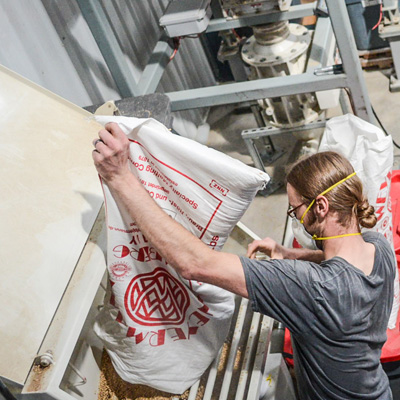You’ve probably heard the term ‘high-gravity beer,’ and may have indulged in a few of them due to the ever-expanding offerings available from America’s small and independent producers.
So what are high-gravity beers? How are they related to higher-alcohol beers, and why do they often have a higher price tag?
The tips, tricks, lore and legend surrounding high-gravity brewing could fill a book (and it’s been done!), but let’s just stick to some of the basics.
High Gravity Beer Basics
High-gravity beer, often called “big beer,” is bold, flavorful and powerful. Everything about these beers is substantial, from their intense flavor and other exaggerated characteristics to their generally higher alcohol content (the percentage varies from state to state for what is considered high gravity by law).
Common High Gravity Beer Styles
- Barley Wine
- Imperial Porter / Imperial Stout
- Scotch Ale / Wee Heavy
- Imperial IPA
- Wheat Wine Ale
- Barrel-Aged Beer
- Belgian-Style Golden Strong Ale
“High-gravity” refers to brewing a beer with high original gravity (OG)—typically, above 1.075 OG is considered high. OG is a measure of the fermentable and un-fermentable substances in the wort before fermentation. This is measured after the initial boil, before the yeast is pitched, and will be used later in conjunction with the final gravity reading to calculate the alcohol percentage.
High OG means there is plenty of “food” in the wort for the yeast to eat—and when yeast eat, they produce, among other components, alcohol. Given the right conditions, environment and care, certain yeast strains in high-gravity wort are capable of producing very large amounts of alcohol, which is why the “high-gravity” descriptor is synonymous with a high alcohol percentage.
The Work
There is undoubtedly more stress and risk imposed on a brewery when it sets out to make a strong beer. Those familiar with the short-lived television program Brewmasters will surely remember the horror of watching the Dogfish Head team dump a $500,000 batch of 120 Minute IPA down the drain after a stuck fermentation.
For a further illustration, take Oskar Blues’ description of the extra effort they put into their 10.5 percent Ten FIDY Russian Imperial Stout:
“This brew is constructed with colossal amounts of two-row malt, chocolate malt, roasted barley, flaked oats and hops. Ten FIDY’s nearly 5,000-pound grain bill is just short of 50 percent specialty malts, which are packaged in 55-pound bags and loaded into the mills by hand. The tremendous bags of oats are poured directly into the mash tuns. The oats and rice hulls must be lugged up 20-odd stairs to the top of the brew decks.”
A high-gravity brew will also use hops a great deal less efficiently than a lower-gravity beer. This means breweries need to use more hops in high-gravity beers than normal. To give an example, Uinta Brewing Co.’s Dubhe Imperial Black IPA, at a modest 9.2 percent ABV, uses more than five pounds of hops per barrel.
The Yeast
In addition to the large amounts of ingredients needed to produce a high-gravity beer, the brewer also needs to create an environment for their yeast to have the best chance of success. Careful planning is necessary to choose the right strain (or stains) of yeast, and then provide proper aeration, nutrition and temperature for the yeast to reproduce and grow.
Yeast in a high-gravity brew has a lot of hard work to do and not every yeast strain is suitable to ferment a high-gravity beer. It’s important to select a strain that not only produces the desired flavor, but can also tolerate the level of alcohol expected in the finished beer.
Big beers also require larger quantities of yeast for proper fermentation. For example, typical batch of lower-gravity homebrew will call for a single package of yeast, which might contain 100 billion yeast cells. But to ferment wort with a sky-high OG of 1.080 would require more than 400 billion cells. That’s a lot more yeast to pitch!
High Gravity Beer Commercial Examples
- Tripel B | Adelbert’s BreweryOpens in new window | Austin, TX
- Small Batch Series No. 8 (English-style barley wine) | Ranger Creek Brewing & DistillingOpens in new window | San Antonio, TX
- Atropos Imperial IPA | FATE Brewing Co.Opens in new window | Boulder, CO
- Blackberry Belgian Strong Ale | Upslope Brewing Co.Opens in new window | Boulder, CO
- Quadrotriticale (quadrupel) | Stone Brewing Co.Opens in new window | Escondido, CA
In the End
Clearly, it’s no easy feat to produce consistent, successful and great-tasting big beers. Whether they agree with your palate, however, is a different question. Big beers can be intense, and not everyone will enjoy a higher-gravity beer. But the next time you run across one of these loaded libations, pause to reflect on the time and effort that went into making it. Take a moment to be grateful for the astounding variety of beers that are available to us these days, from petite, palatable pilseners to intense, high-alcohol imperials. Challenge your taste buds and take chance on a bold, high-gravity beer. You may be pleased with the rewards.
CraftBeer.com is fully dedicated to small and independent U.S. breweries. We are published by the Brewers Association, the not-for-profit trade group dedicated to promoting and protecting America’s small and independent craft brewers. Stories and opinions shared on CraftBeer.com do not imply endorsement by or positions taken by the Brewers Association or its members.


Share Post